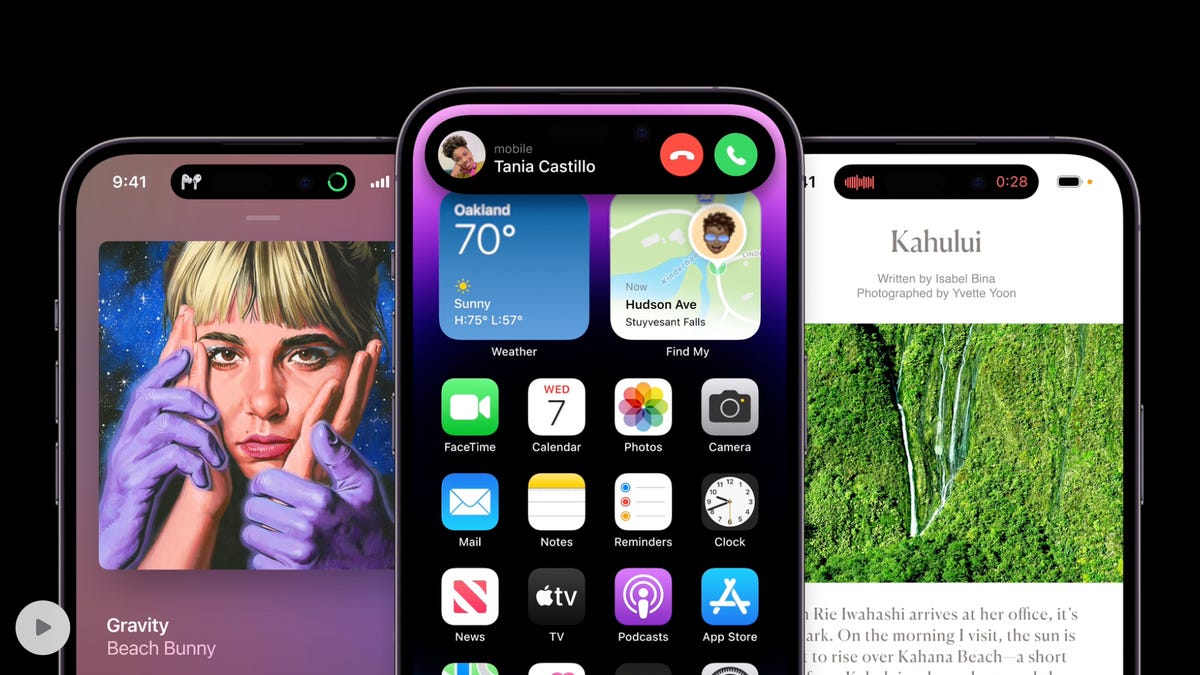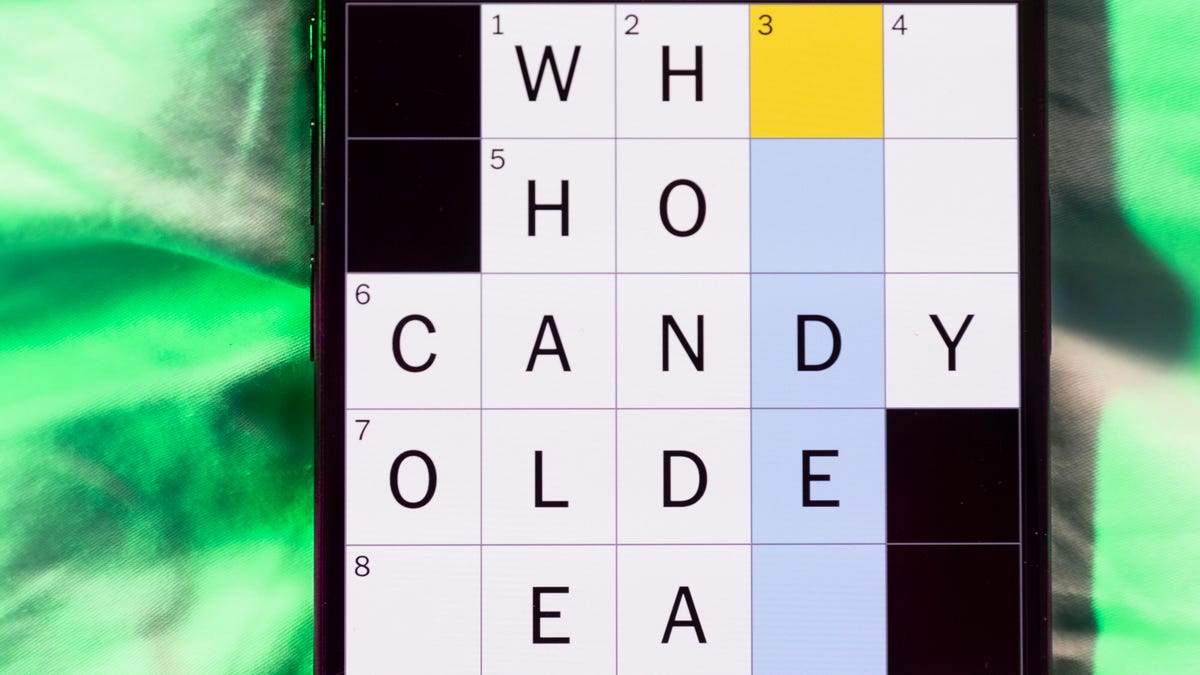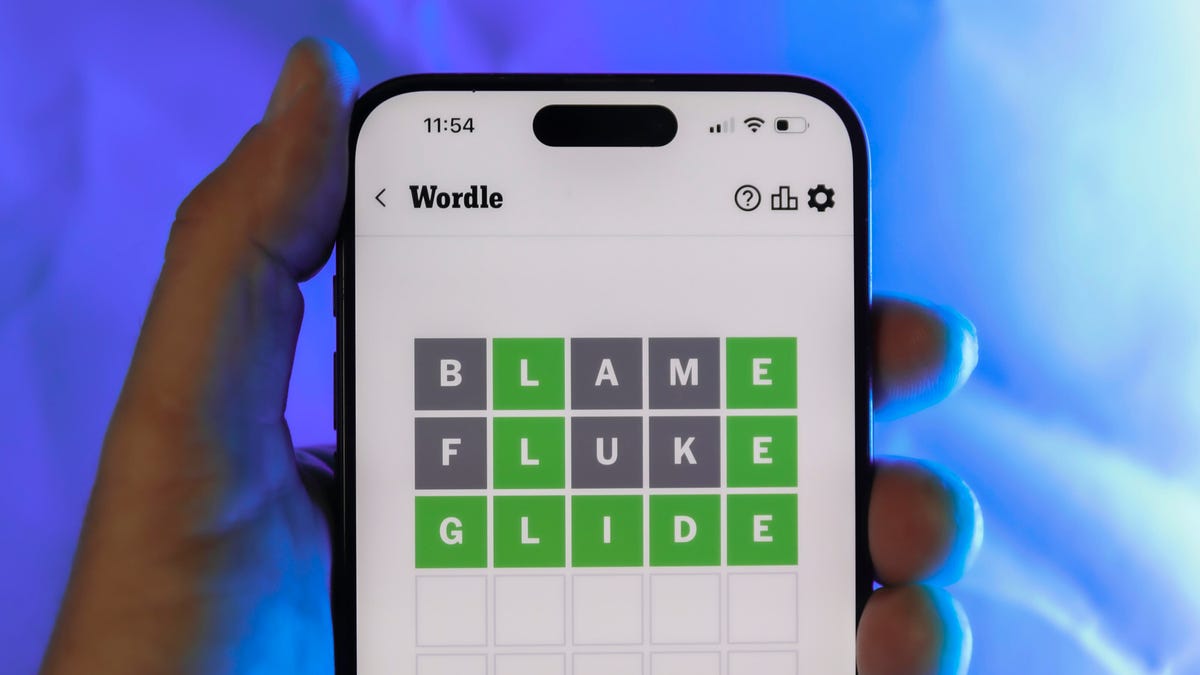Technologies
iPhone 15: Apple’s Latest Rumors, Product Predictions and More
The rumor mill is buzzing about a significant upgrade to the iPhone. But don’t expect a foldable device from Apple this year.

Apple is weeks away from its annual fall event, where the next iPhone, which we’re unofficially calling the iPhone 15 series, is set to be unveiled. Although we don’t expect to see a foldable from Apple just yet, the rumor mill is buzzing about the next iPhones departing from their traditional design in a meaningful way.
Some of the big questions people are asking are: Will the iPhone 15 get a USB-C port? Will the iPhone 15 series have slimmer bezels? Will Apple increase iPhone prices in 2023? Will the Pro models receive bigger upgrades?
We won’t know for sure until Apple throws the next iPhone event, which will probably be in September. But here are some of the biggest and most credible rumors to give you an idea of what to expect from the iPhone 15 series.
iPhone 15 design: Hello USB-C, goodbye Lightning
This one has been circulating around the rumor mill for years now, but in 2023 the switch from a Lightning Port to a USB-C port could finally happen. That’s likely driven by pressure from the European Union, which has been pushing for a common charging standard for years. In 2022, the bloc managed to pass legislation requiring Apple to equip its iPhones with USB-C ports by 2024 if it wants to sell them in the EU.
If that happens, the question is whether Apple will switch all iPhone models to USB-C or just those sold in the EU. Apple already modifies iPhone models regionally, as it has done with the iPhone 14: The US version has an electronic SIM, while other variants retain the SIM slot. However, there are good reasons to move all iPhones to USB-C moving forward, according to Avi Greengart, analyst at Techsponential.
«There are larger ecosystem, security, and accessory considerations with the power/data connector, so I think it is more likely that Apple moves all iPhones [globally] to USB-C in the iPhone 16 timeframe to comply with European regulations,» he told CNET in an email.
According to seasoned Bloomberg reporter Mark Gurman, only the iPhone 15 Pro and iPhone 15 Pro Max models will receive USB-C ports this year. Perhaps a complete transition could happen next year with the iPhone 16.
Read more: Your Next iPhone Will Probably Need a Different Charging Cable
iPhone 15 design: Dynamic Island expands to all models
Apple is likely to continue selling four iPhone models with the iPhone 15 lineup. Rumors point to a generally similar design across the board, except that the iPhone 14 Pro’s shape-shifting cutout, known as Dynamic Island, is set to make its way across all models.
That rumor comes from display analyst Ross Young, who also said in a September tweet that he’s not expecting base iPhone 15 models to have a higher refresh rate like Apple’s Pro iPhones because the supply chain can’t support it. Gurman also still expects this to pan out as indicated by the Jun. 30 edition of his Power On newsletter.
Read more: iPhone 14 Pro’s Most Eye-Catching Feature Feels Like It’s Winking at Something Else
iPhone 15 design: Skinnier bezels
According to Gurman, Apple’s expected to use a new manufacturing technology called «low-injection pressure over-molding» to make the Pro iPhones. This is the same method that’s used for some Apple Watch models. It will help Apple reduce the size of the bezels by fractions of a millimeter, which would in turn allow for an ever-so-slight increase in screen real estate.
iPhone 15 design: Easier repairability
The interiors of the iPhone 15 Pro and iPhone 15 Pro Max are also slated for a redesign that will make them easier to repair, according to the latest edition of Gurman’s Power On newsletter. Gurman says the inside parts have been changed to match the ones in the iPhone 14 and iPhone 14 Plus, which received the internal changes last year.
«This is the iPhone 14 reborn as a beautiful butterfly — a midframe in the middle, accessible screen on the left, and removable rear glass on the right,» iFixit wrote in a post last September after the iPhone event.
Interestingly, Apple didn’t discuss this internal redesign in its keynote, but the change was spotted by repair experts at iFixit, who said it was evident that Apple went back to the drawing board to rework the internals and integrate them seamlessly into its iPhones.
iPhone 15: Upgraded ultra wideband
According to noted Apple analyst Ming Chi Kuo, the iPhone 15 will run on an upgraded Ultra Wideband processor, which Apple calls the U1 chip, to better integrate with the company’s new AR headset, the Vision Pro. UWB is a short-range wireless communication standard often used to track down the location of objects. It can pinpoint your Apple AirTag or unlock your car as you walk up to it with your phone. In a recent post on Twitter, Kuo said this is all part of Apple’s broader strategy to «build a more competitive ecosystem for Vision Pro.»
iPhone 15: Wireless charging upgrade
According to a May report by ChargerLab, a power specialist website with a steady track record, all iPhone 15 models will support 15-watt wireless charging using the Qi2 open standard. If this turns out to be true, it’ll mean the iPhone 15 could open up a whole new world of wireless charging devices that can replenish the device at its full speed. Apple had previously limited open wireless charging standards to 7.5W, leaving the full 15W charge speed for Apple MagSafe licensed accessories.
iPhone 15 camera: Periscope-style telephoto lens arrives
Noted Apple observer Ming-Chi Kuo, an analyst with TF International Securities, forecasts that the iPhone 15 Pro Max will receive a periscope-style telephoto lens. This sort of telephoto lens allows for higher optical zoom levels, with Kuo forecasting a 6x optical zoom could arrive in the iPhone 15 Pro Max. The optical zoom on the iPhone 14 Pro Max is limited to 3x, which lags rivals such as the Samsung Galaxy S22 Ultra’s 10x optical zoom. This rumor was recently bolstered by well-known leak source and Twitter user Unknownz21, who stated that the Pro Max model will come with the special lens.
Read more: iPhone 14 Pro Cameras Are a Major Upgrade
iPhone 15 design: Solid-state buttons come to pro iPhone 15 models
Kuo expects Apple to differentiate further between its base and Pro models in the coming years. One way he’s expecting that to happen is by way of solid-state volume and power buttons of the iPhone 15 Pro models instead of the standard keys present on today’s devices.
(1/6)
My latest survey indicates that the volume button and power button of two high-end iPhone 15/2H23 new iPhone models may adopt a solid-state button design (similar to the home button design of iPhone 7/8/SE2 & 3) to replace the physical/mechanical button design.— 郭明錤 (Ming-Chi Kuo) (@mingchikuo) October 28, 2022
The solid-state buttons, which Kuo says will be similar to the home button found on the iPhone SE and iPhone 7, mimic the tactile feel of pressing a button with the help of haptic feedback. The apparent advantage of this type of button is that it also protects against water ingress.
iPhone 15 Power: Increased RAM for pro models
According to Taiwanese research firm TrendForce, Pro models of the iPhone 15 lineup will get a bump up in RAM to 8GB from 6GB to complement the anticipated A17 Bionic chipset. Base models will continue to receive 6GB RAM, according to TrendForce. This rumor is also apparently backed up by a research report from analyst Jeff Pu of Haitong International Securities, according to a MacRumors article, which referenced Pu’s report.
iPhone 15 price: Up, up and away?
iPhone 15 prices are tipped to increase in the US for the first time in years. Last year, Apple already increased prices in select countries outside the US.
According to a MacRumors report, citing Barclays analyst Tim Long, the iPhone 15 Pro could cost $100 more than the iPhone 14 Pro, while the iPhone Pro Max price hike could be in the range of $100 to $200 more. A similar claim has been made by Jeff Pu, of investment firm Haitong International Securities, who explicity said the iPhone 15 Pro Max specifically is due for a price increase, according to another MacRumors report. This is based on the assumption that Apple will add more features and components to the Pro models, such as a new periscope camera, a titanium frame and a 3nm A17 Bionic chip.
US prices currently range from $829 for the entry-level iPhone 14 model (128GB) all the way up to $1,599 for the highest-end iPhone 14 Pro Max with 1TB of storage.
Another possibility is the upper limit of the price range could be pushed higher if rumors about a luxe iPhone 15 Ultra turn out to be true. The rumored Ultra model could potentially replace the iPhone 15 Pro Max next year, Bloomberg’s Mark Gurman wrote in September last year. This falls in line with predictions from Kuo, who expects Apple to differentiate further between the iPhone Pro and iPhone Pro Max models. However, in his June 30 newsletter, Gurman made no mention of the iPhone 15 Ultra. Other rumors suggest that the iPhone 15 Ultra will be a step up from the iPhone 15 Pro Max.
Read more: What Apple Could Do With iPhone 15 Prices in 2023
iPhone 15 Ultra camera: Variable zoom
According to tipster Revengus, the iPhone 15 Ultra will feature a telephoto camera with a variable zoom lens, which is the camera setup rumored to feature on Samsung’s Galaxy S24 Ultra. Variable optical zoom (continuous zoom) cameras aren’t commonly found on smartphones for a variety of reasons, including the fact that the size and design of phone cameras restricts the type of lenses that can be used.
iPhone 15: Launch and release timeline
Apple holds its annual iPhone event in September almost every year, so we’d expect the timeline to remain the same for the iPhone 15. New iPhones typically get released shortly thereafter, usually the Friday of the following week. Sometimes Apple will stagger release dates for specific models, especially when introducing a new design or size. So it’s possible that the iPhone 15 lineup will have more than one release date.
Here’s what we know:
- Apple tends to hold its events on Tuesdays or Wednesdays. Apple’s iPhone 14 event was held on Wednesday Sept. 7, while its iPhone 13 event was held on Tuesday, Sept. 14.
- iPhone release dates are typically a week and a half after Apple’s announcements.
- In general, new iPhones are released on a Friday, around the third week of September. For the iPhone 13, preorders began Sept. 17 and the phones went on sale Sept. 24.
Looking for more iPhone advice? Check out our iPhone upgrade guide, our list of the best iPhones and our roundup of the best cases for your iPhone 14 or 14 Pro.
Technologies
Today’s NYT Mini Crossword Answers for Wednesday, Dec. 24
Here are the answers for The New York Times Mini Crossword for Dec. 24.

Looking for the most recent Mini Crossword answer? Click here for today’s Mini Crossword hints, as well as our daily answers and hints for The New York Times Wordle, Strands, Connections and Connections: Sports Edition puzzles.
Need some help with today’s Mini Crossword? I’m Irish-American, but yet 6-Down, which involves Ireland, stumped me at first. Read on for all the answers.. And if you could use some hints and guidance for daily solving, check out our Mini Crossword tips.
If you’re looking for today’s Wordle, Connections, Connections: Sports Edition and Strands answers, you can visit CNET’s NYT puzzle hints page.
Read more: Tips and Tricks for Solving The New York Times Mini Crossword
Let’s get to those Mini Crossword clues and answers.
Mini across clues and answers
1A clue: Wordle or Boggle
Answer: GAME
5A clue: Big Newton
Answer: ISAAC
7A clue: Specialized vocabulary
Answer: LINGO
8A clue: «See you in a bit!»
Answer: LATER
9A clue: Tone of many internet comments
Answer: SNARK
Mini down clues and answers
1D clue: Sharks use them to breathe
Answer: GILLS
2D clue: From Singapore or South Korea, say
Answer: ASIAN
3D clue: Large ocean ray
Answer: MANTA
4D clue: ___ beaver
Answer: EAGER
6D clue: Second-largest city in the Republic of Ireland, after Dublin
Answer: CORK
Don’t miss any of our unbiased tech content and lab-based reviews. Add CNET as a preferred Google source.
Technologies
Quadrantids Is a Short but Sweet Meteor Shower Just After New Year’s. How to See It
This meteor shower has one of the most active peaks, but it doesn’t last for very long.

The Quadrantids has the potential to be one of the most active meteor showers of the year, and skygazers won’t have long to wait to see it. The annual shower is predicted to reach maximum intensity on Jan. 3. And with a display that can rival Perseids, Quadrantids could be worth braving the cold to see it.
Don’t miss any of our unbiased tech content and lab-based reviews. Add CNET as a preferred Google source.
The show officially begins on Dec. 28 and lasts until Jan. 12, according to the American Meteor Society. Quadrantids is scheduled to peak on Jan. 2-3, when it may produce upwards of 125 meteors per hour. This matches Perseids and other larger meteor showers on a per-hour rate, but Quadrantids also has one of the shortest peaks at just 6 hours, so it rarely produces as many meteors overall as the other big ones.
The meteor shower comes to Earth courtesy of the 2003 EH1 asteroid, which is notable because most meteor showers are fed from comets, not asteroids. Per NASA, 2003 EH1 is a near-Earth asteroid that orbits the sun once every five and a half years. Science posits that 2003 EH1 was a comet in a past life, but too many trips around the sun stripped it of its ice, leaving only its rocky core. The Earth runs through EH1’s orbital debris every January, which results in the Quadrantids meteor shower.
How and where to see Quadrantids
Quadrantids is named for the constellation where its meteors appear to originate, a point known as the radiant. This presents another oddity, as the shower originates from the constellation Quadrans Muralis. This constellation ceased to be recognized as an official constellation in the 1920s and isn’t available on most publicly accessible sky maps.
For the modern skygazer, you’ll instead need to find the Bootes and Draco constellations, both of which contain stars that were once a part of the Quadrans Muralis. Draco will be easier to find after sunset on the evening of Jan. 2, and will be just above the horizon in the northern sky. Bootes orbits around Draco, but will remain under the horizon until just after 1 a.m. local time in the northeastern sky. From that point forward, both will sit in the northeastern part of the sky until sunrise. You’ll want to point your chair in that direction and stay there to see meteors.
As the American Meteor Society notes, Quadrantids has a short but active peak, lasting around 6 hours. The peak is expected to start around 4 p.m. ET and last well into the evening. NASA predicts the meteor shower to start one day later on Jan. 3-4, so if you don’t see any on the evening of Jan. 2, try again on Jan. 3.
To get the best results, the standard space viewing tips apply. You’ll want to get as far away from the city and suburbs as possible to reduce light pollution. Since it’ll be so cold outside, dress warmly and abstain from alcoholic beverages, as they can affect your body temperature. You won’t need any binoculars or telescopes, and the reduced field of view may actually impact your ability to see meteors.
The bad news is that either way, the Quadrantids meteor shower coincides almost perfectly with January’s Wolf Moon, which also happens to be a supermoon. This will introduce quite a lot of light pollution, which will likely drown out all but the brightest meteors. So, while it may have a peak of over 100 meteors per hour, both NASA and the AMS agree that the more realistic expectation is 10 or so bright meteors per hour.
Technologies
Today’s Wordle Hints, Answer and Help for Dec. 24, #1649
Here are hints and the answer for today’s Wordle for Dec. 24, No. 1,649.

Looking for the most recent Wordle answer? Click here for today’s Wordle hints, as well as our daily answers and hints for The New York Times Mini Crossword, Connections, Connections: Sports Edition and Strands puzzles.
Today’s Wordle puzzle is a little tricky, with a double letter that could confuse players. If you need a new starter word, check out our list of which letters show up the most in English words. If you need hints and the answer, read on.
Read more: New Study Reveals Wordle’s Top 10 Toughest Words of 2025
Today’s Wordle hints
Before we show you today’s Wordle answer, we’ll give you some hints. If you don’t want a spoiler, look away now.
Wordle hint No. 1: Repeats
Today’s Wordle answer has one repeated letter.
Wordle hint No. 2: Vowels
Today’s Wordle answer has one vowel, but it’s the repeated letter, so you’ll see it twice.
Wordle hint No. 3: First letter
Today’s Wordle answer begins with S.
Wordle hint No. 4: Last letter
Today’s Wordle answer ends with L.
Wordle hint No. 5: Meaning
Today’s Wordle answer can refer to a cylindrical device upon which thread is wound.
TODAY’S WORDLE ANSWER
Today’s Wordle answer is SPOOL.
Yesterday’s Wordle answer
Yesterday’s Wordle answer, Dec. 23, No. 1648 was GLINT.
Recent Wordle answers
Dec. 19, No. 1644: MYRRH
Dec. 20, No. 1645: WHITE
Dec. 21, No. 1646: QUILT
Dec. 22, No. 1647: CONCH
Don’t miss any of our unbiased tech content and lab-based reviews. Add CNET as a preferred Google source.
-

 Technologies3 года ago
Technologies3 года agoTech Companies Need to Be Held Accountable for Security, Experts Say
-

 Technologies3 года ago
Technologies3 года agoBest Handheld Game Console in 2023
-

 Technologies3 года ago
Technologies3 года agoTighten Up Your VR Game With the Best Head Straps for Quest 2
-

 Technologies4 года ago
Technologies4 года agoBlack Friday 2021: The best deals on TVs, headphones, kitchenware, and more
-

 Technologies4 года ago
Technologies4 года agoVerum, Wickr and Threema: next generation secured messengers
-

 Technologies4 года ago
Technologies4 года agoGoogle to require vaccinations as Silicon Valley rethinks return-to-office policies
-

 Technologies4 года ago
Technologies4 года agoOlivia Harlan Dekker for Verum Messenger
-

 Technologies4 года ago
Technologies4 года agoiPhone 13 event: How to watch Apple’s big announcement tomorrow
